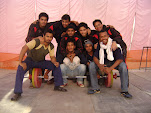My earlier plan was to attempt my max bench press and push press in the second week of September. But around August 15, I had gotten a couple of days of rest after two days of light workouts. So I had decided to test my maxes during that weekend.
On 17th August, I had attempted my max bench. My previous max was 98kg (or 99kg, used a barbell whose weight I didn't know exactly) done in April 2013. This time, I did 100kg, then 105kg, and then failed at 110kg. I wanted to go for 107kg after 105kg, but the gym didn't have plates smaller than 2.5kg.
On 19th August, I had attempted my max push press. My previous max was 87kg, done in November 2012. This time, I hit 90kg, and then 95kg. The 95kg itself was a critical lift, so I hadn't attempted 100kg. Two days back, on 28th August, I had hit 95kg again.
In addition to the presses, yesterday I had squatted 110kg for 5 singles, Powerlifting style, without belt or spotters. Although it is in no way an impressive lift, this is the first time I have squatted 100+ without any knee pain. And I have also started feeling more confident with my Powerlifting style squat (I have switched from Olympic squats to Powerlifting squats in March). I am not rushing to load more weight on the squats yet, I'm allowing for my knee to heal sufficiently before I start to hit new maxes. Though PL squats are going fine, it hurts when I attempt a deep front squat. Classical cleans and snatches are still a strict NO for me. And in addition to squatting, I'm now hitting heavy deadlifts - 65kg or 70kg for 2 or 3 reps.
My gym subscription expires in two weeks. I'm hoping to push my maxes a little further in this short period- 100kg push press and 110kg bench press are what I have in mind for the second week of September.
On 17th August, I had attempted my max bench. My previous max was 98kg (or 99kg, used a barbell whose weight I didn't know exactly) done in April 2013. This time, I did 100kg, then 105kg, and then failed at 110kg. I wanted to go for 107kg after 105kg, but the gym didn't have plates smaller than 2.5kg.
On 19th August, I had attempted my max push press. My previous max was 87kg, done in November 2012. This time, I hit 90kg, and then 95kg. The 95kg itself was a critical lift, so I hadn't attempted 100kg. Two days back, on 28th August, I had hit 95kg again.
In addition to the presses, yesterday I had squatted 110kg for 5 singles, Powerlifting style, without belt or spotters. Although it is in no way an impressive lift, this is the first time I have squatted 100+ without any knee pain. And I have also started feeling more confident with my Powerlifting style squat (I have switched from Olympic squats to Powerlifting squats in March). I am not rushing to load more weight on the squats yet, I'm allowing for my knee to heal sufficiently before I start to hit new maxes. Though PL squats are going fine, it hurts when I attempt a deep front squat. Classical cleans and snatches are still a strict NO for me. And in addition to squatting, I'm now hitting heavy deadlifts - 65kg or 70kg for 2 or 3 reps.
My gym subscription expires in two weeks. I'm hoping to push my maxes a little further in this short period- 100kg push press and 110kg bench press are what I have in mind for the second week of September.
